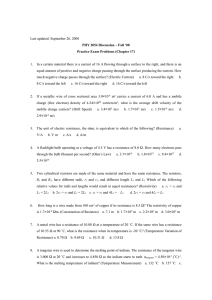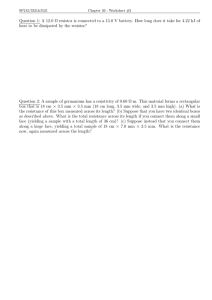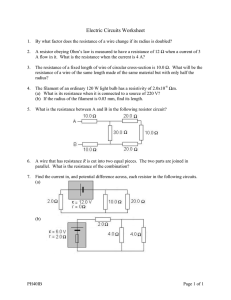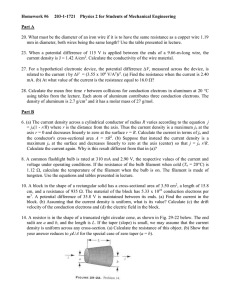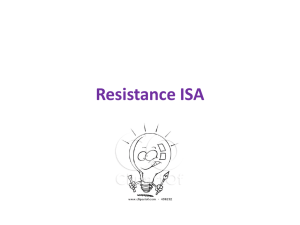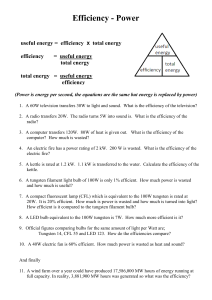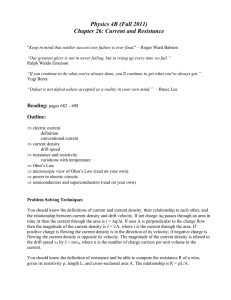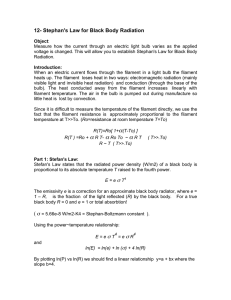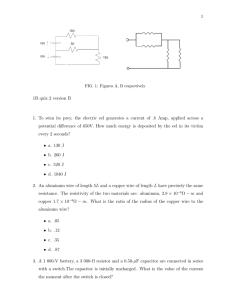Question 1: A copper wire has a cross sectional area... m . The electron density in copper is 8.5×10
advertisement
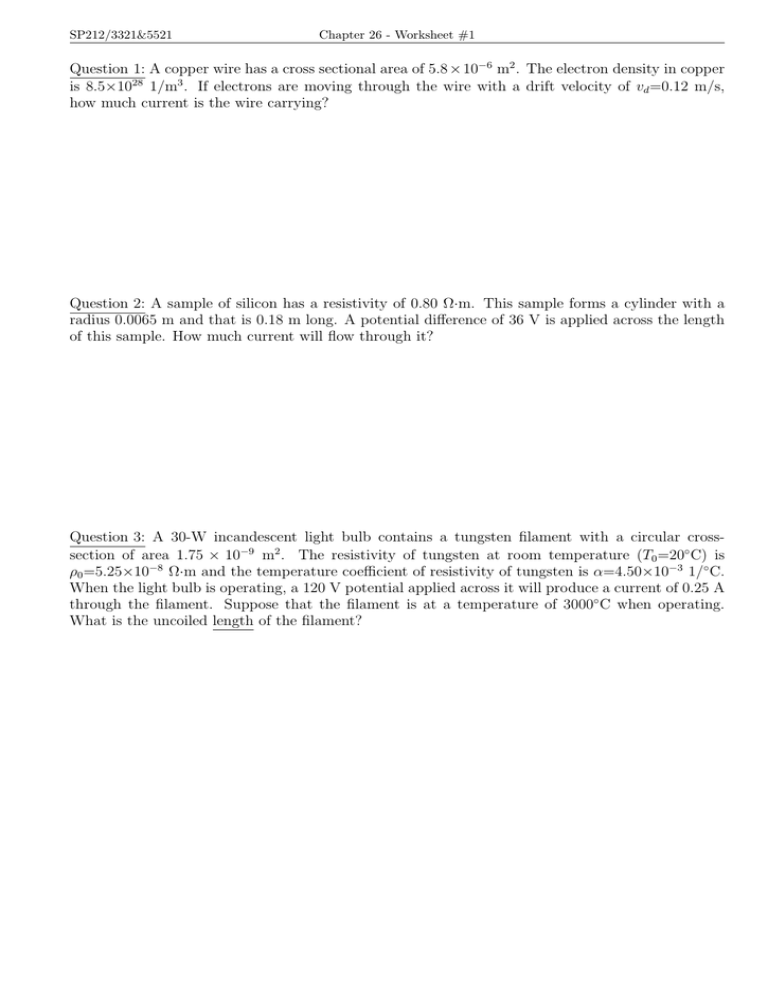
SP212/3321&5521 Chapter 26 - Worksheet #1 Question 1: A copper wire has a cross sectional area of 5.8 × 10−6 m2 . The electron density in copper is 8.5×1028 1/m3 . If electrons are moving through the wire with a drift velocity of vd =0.12 m/s, how much current is the wire carrying? Question 2: A sample of silicon has a resistivity of 0.80 Ω·m. This sample forms a cylinder with a radius 0.0065 m and that is 0.18 m long. A potential difference of 36 V is applied across the length of this sample. How much current will flow through it? Question 3: A 30-W incandescent light bulb contains a tungsten filament with a circular crosssection of area 1.75 × 10−9 m2 . The resistivity of tungsten at room temperature (T0 =20◦ C) is ρ0 =5.25×10−8 Ω·m and the temperature coefficient of resistivity of tungsten is α=4.50×10−3 1/◦ C. When the light bulb is operating, a 120 V potential applied across it will produce a current of 0.25 A through the filament. Suppose that the filament is at a temperature of 3000◦ C when operating. What is the uncoiled length of the filament?

